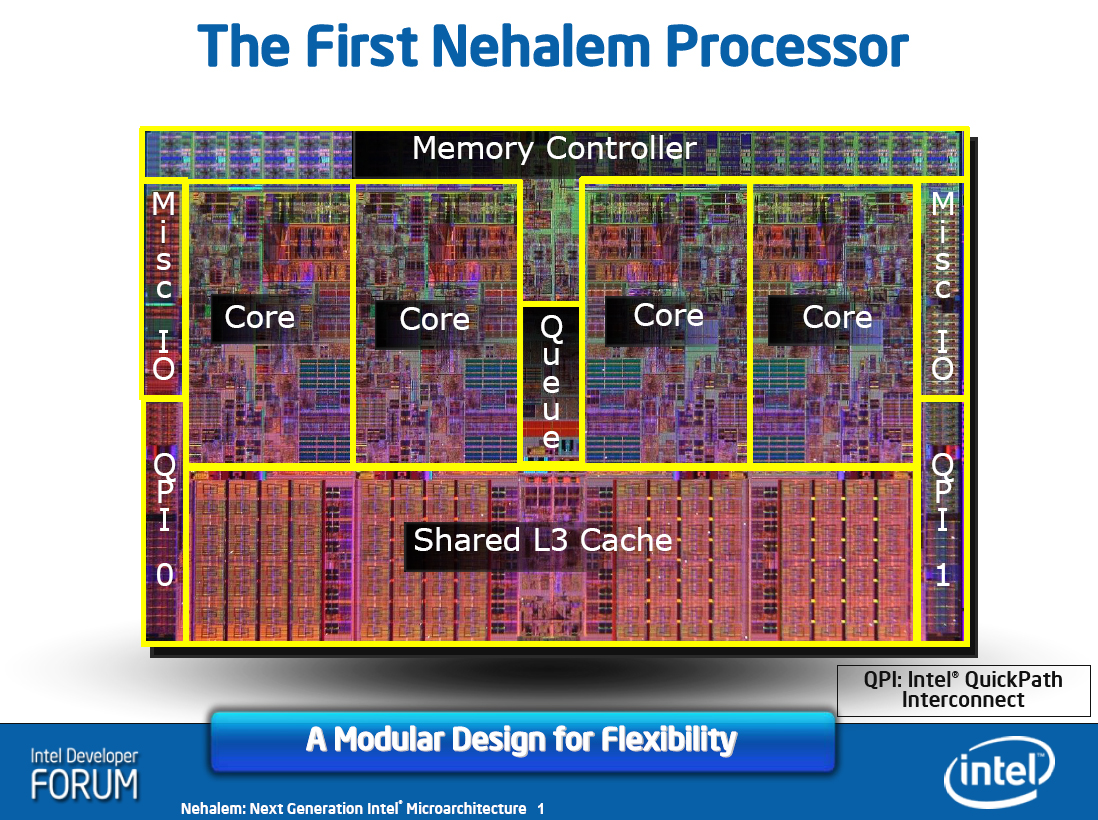Intel: Core i7 is just the beginning
Tick-Tock road map leads us all the way to visual computing

Core i7 is just the latest instalment of Intel's Tick-Tock road map for processor and platform updates. Lest you have forgotten, Tick-Tock commits Intel to banging out a brand new CPU architecture one year and then shrinking its transistors the next for the foreseeable future.
The whole thing kicked off with the original Core 2 launch in the second half of 2006, which was followed by a process shrink to 45nm at the end of last year. Core i7 is therefore bang on time. But what can we expect as a follow up?
If Intel hits its targets, the next step is a 32nm revision of the Nehalem architecture that underpins Core i7 some time next year. It's likely that the promised eight-core variant of Core i7 will be based on 32nm silicon for cost reasons.
In 2010, the next major architectural overhaul, codenamed Sandy Bridge, arrives. Little is known about Sandy Bridge, currently, but Intel has hinted in the past that it will be capable of over 200GFLOPs of raw floating point performance. To put that into context, the Core i7-965 Extreme Edition is good for approximately 80GFLOPs. Scary, eh?
New age of visual computing
If Intel is to be believed, we are on the cusp of a bold new age of visual computing. According to Intel, a new class of highly visual applications is coming, such as intelligent video and image search, advanced graphical interfaces and context aware computers that track and interpret human behaviour. And that will require chips capable of massive parallel processing power.
So, here's an idea of what you can expect the visual computing effort to mean in overall hardware terms for the PC by late 2009 or early 2010. General purpose processing power will come courtesy of the eight-core revision of Core i7, no doubt running at clockspeeds that will scare your grandmother. By then, Intel will very probably also be shipping a second generation version of its awesome SSD drives with much more capacity, significantly lower costs and silly read and write speeds.
Get daily insight, inspiration and deals in your inbox
Sign up for breaking news, reviews, opinion, top tech deals, and more.
The final piece of the puzzle is the mythical Larrabee chip. As well as being a revolutionary rethink of what makes for a good GPU, it also promises to deliver truly monumental parallel performance for a wide range of non-graphics applications. With at least 2TFLOPs of raw floating point performance, it should be twice as powerful as any current GPU.
Technology and cars. Increasingly the twain shall meet. Which is handy, because Jeremy (Twitter) is addicted to both. Long-time tech journalist, former editor of iCar magazine and incumbent car guru for T3 magazine, Jeremy reckons in-car technology is about to go thermonuclear. No, not exploding cars. That would be silly. And dangerous. But rather an explosive period of unprecedented innovation. Enjoy the ride.